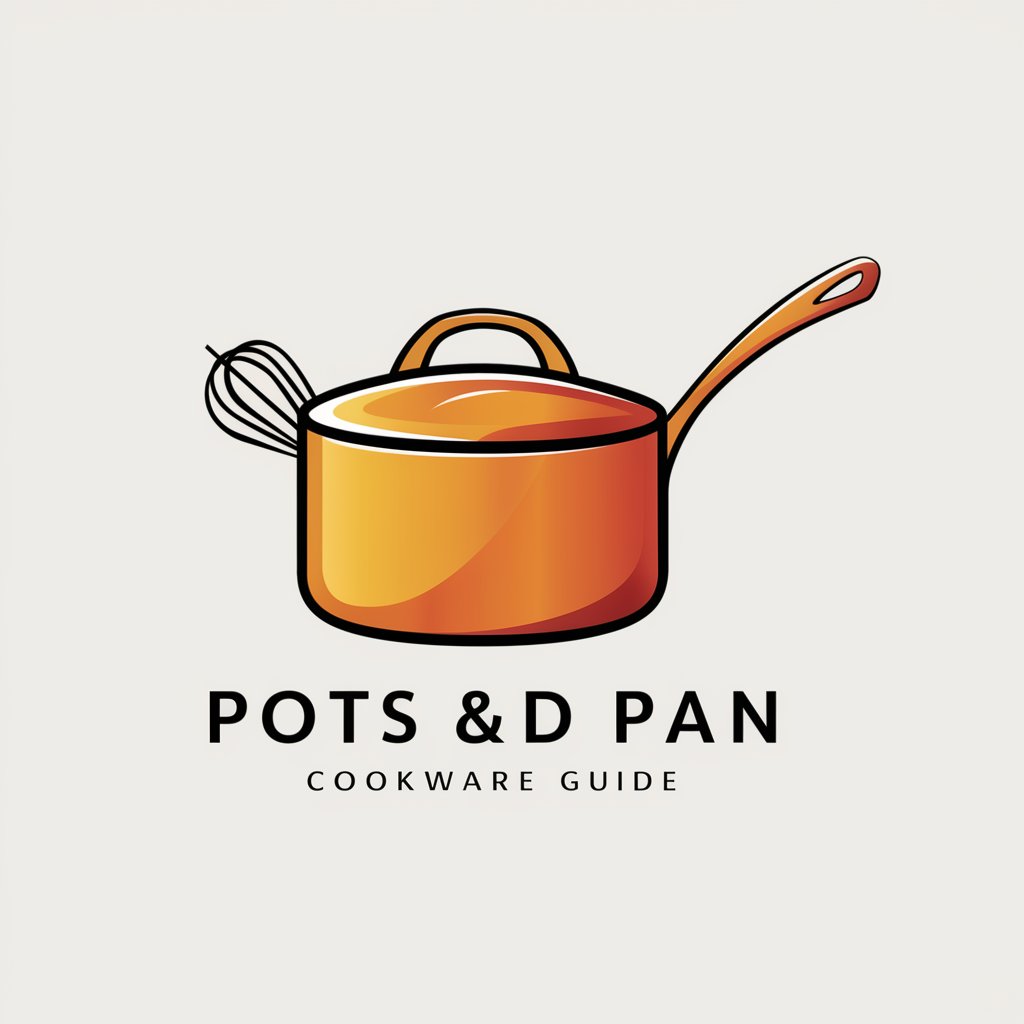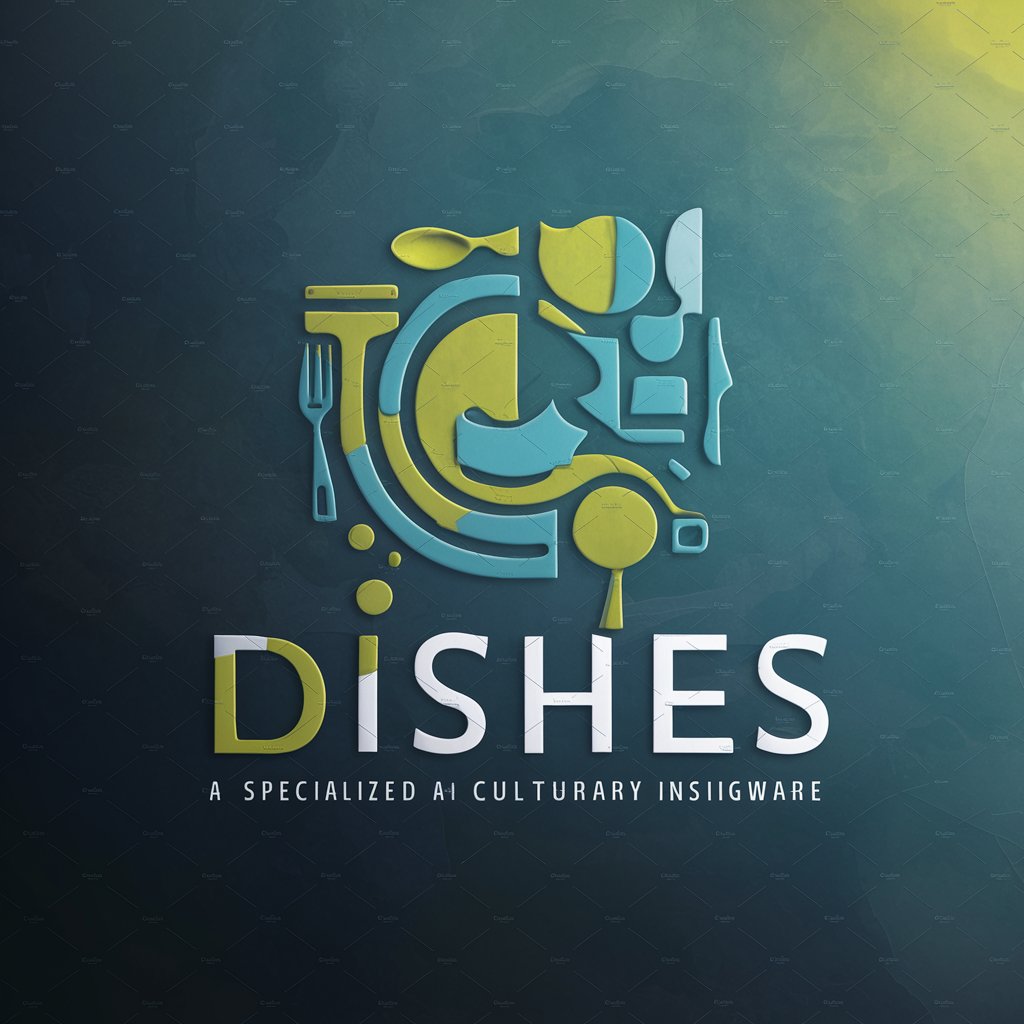
Pots and Pans - cookware guidance and tips

Hello! Need cookware advice? I'm here to help!
Master your cookware with AI
Can you recommend a set of pots and pans for beginners?
What are the best materials for non-stick cookware?
How should I maintain my cast iron skillet?
Which type of pan is ideal for searing meat?
Get Embed Code
Overview of Pots and Pans
Pots and Pans are essential kitchen tools designed for a variety of cooking methods, from boiling and steaming to frying and sautéing. They come in various shapes, sizes, and materials to suit different cooking needs. For example, pots are typically deeper with high sides for liquids, ideal for boiling pasta or simmering soups. Pans, on the other hand, tend to be shallower with lower sides, perfect for frying eggs or sautéing vegetables. The design purpose behind these tools is to facilitate efficient heat distribution and retention, ensuring food is cooked evenly. Materials range from cast iron, which is excellent for heat retention, to stainless steel, known for its durability and non-reactive properties, and non-stick surfaces for easy food release and cleanup. Each material and design has its specific use-case, illustrating the thoughtful engineering behind cookware to cater to various culinary tasks. Powered by ChatGPT-4o。

Functions and Applications
Boiling and Simmering
Example
Using a stainless steel pot to boil pasta or simmer a stock.
Scenario
A stainless steel pot with a thick bottom is ideal for boiling water for pasta due to its excellent heat conduction. Its high sides and volume also make it suitable for simmering stocks or soups over long periods, allowing flavors to develop fully without rapid evaporation.
Frying and Sautéing
Example
Utilizing a non-stick or cast iron pan for frying eggs or sautéing vegetables.
Scenario
A non-stick frying pan is perfect for cooking eggs or pancakes, as its surface allows food to release easily with minimal oil. A cast iron skillet, with its superior heat retention, is ideal for achieving a perfect sear on meats or for sautéing vegetables at high temperatures, creating rich flavors and textures.
Baking and Roasting
Example
Using a Dutch oven for baking bread or roasting a chicken.
Scenario
A cast iron Dutch oven is excellent for baking bread, as it mimics a steam oven, creating a crispy crust. Its tight-fitting lid and thick walls also make it suitable for slow-roasting meats or vegetables, ensuring they are tender and flavorful.
Steaming
Example
Employing a pot with a steamer insert to steam vegetables or dumplings.
Scenario
A pot with a steamer insert allows for efficient steaming of vegetables, preserving their nutrients and color. It's also ideal for steaming dumplings or fish, using the steam's gentle heat to cook food evenly without direct contact with water.
Target User Groups
Home Cooks
Individuals who enjoy cooking at home, ranging from beginners to experienced cooks. They benefit from a variety of pots and pans that offer versatility for different cooking techniques, improving the quality of their meals and expanding their culinary skills.
Professional Chefs
Culinary professionals in restaurant kitchens require high-quality, durable cookware that can withstand heavy use. They benefit from specific types of pots and pans that cater to precise cooking methods, essential for consistency and excellence in their dishes.
Culinary Students
Students learning the art of cooking need a comprehensive set of pots and pans to practice and master various cooking techniques. Access to diverse cookware allows them to experiment with recipes and understand the impact of different materials and designs on food.
Outdoor Enthusiasts
Individuals who enjoy camping or outdoor cooking benefit from specialized pots and pans designed for portability and use over open fires or portable stoves, enhancing their outdoor culinary experience.

How to Use Pots and Pans
1
Start your culinary journey at yeschat.ai, where a free trial awaits without the need for login or ChatGPT Plus.
2
Identify your cooking task to choose the right type of pot or pan, considering factors such as material (e.g., stainless steel, cast iron), size, and compatibility with your stove type.
3
Preheat your pot or pan as needed, depending on the cooking method. For example, for searing meat, preheat the pan to a high temperature before adding oil.
4
Use appropriate utensils (wooden, silicone, or metal) to avoid damaging the surface of your cookware, especially if it's non-stick.
5
After use, clean your pots and pans according to the manufacturer’s instructions to maintain their condition and longevity, which may include hand washing or dishwasher use, depending on the material.
Try other advanced and practical GPTs
Productivity
Enhancing Efficiency with AI-Powered Precision

MyHRAlly
Empowering Your Employment Journey with AI

Email Elevator
AI-Powered Personalized Email Drafting

Game creator
Unleash creativity in game design with AI

Meme Magic Wizard
Craft Memes with AI Magic

Häuser schätzen lassen
AI-powered real estate valuation at your fingertips.

Miss Minutes
Unraveling the Marvel Universe with AI

Rockets
Explore the cosmos with AI-powered guidance.

App Developer & Architect
Empowering app creation with AI

Color Stage
Illuminate Creatively with AI

Minifig Maker
Craft Your Dream LEGO Minifigure

Geo Advisor
Empowering decisions with AI-driven geographic insights

Pots and Pans Q&A
What types of pots and pans should every kitchen have?
Every kitchen should have a variety of pots and pans to cover basic cooking needs, including a skillet for sautéing and frying, a saucepan for sauces and boiling, a stockpot for soups and stocks, and a cast iron pan for searing and oven use. These pieces can handle most cooking tasks effectively.
How do I choose the right material for my pots and pans?
Select material based on heat conductivity, maintenance, and cooking style. Stainless steel is durable and good for searing; non-stick is easy to clean and great for low-fat cooking; cast iron provides excellent heat retention but requires seasoning; and copper offers precise temperature control but is high maintenance.
Can I use metal utensils with non-stick pans?
It's best to avoid metal utensils with non-stick pans to prevent scratching the surface. Use wooden, bamboo, or silicone utensils to extend the life of the non-stick coating.
How do I properly season a cast iron pan?
To season a cast iron pan, clean it, dry thoroughly, then apply a thin layer of cooking oil to the surface. Heat the pan in an oven at 375°F for about an hour to allow the oil to polymerize, creating a natural, non-stick coating. Repeat this process as needed.
What is the best way to clean and maintain stainless steel cookware?
For stainless steel cookware, wash with warm soapy water using a sponge or soft cloth. Avoid using abrasive cleaners. For tough stains, use a mixture of vinegar and water or a non-abrasive cleaner. Dry thoroughly to prevent water spots and maintain its shine.





